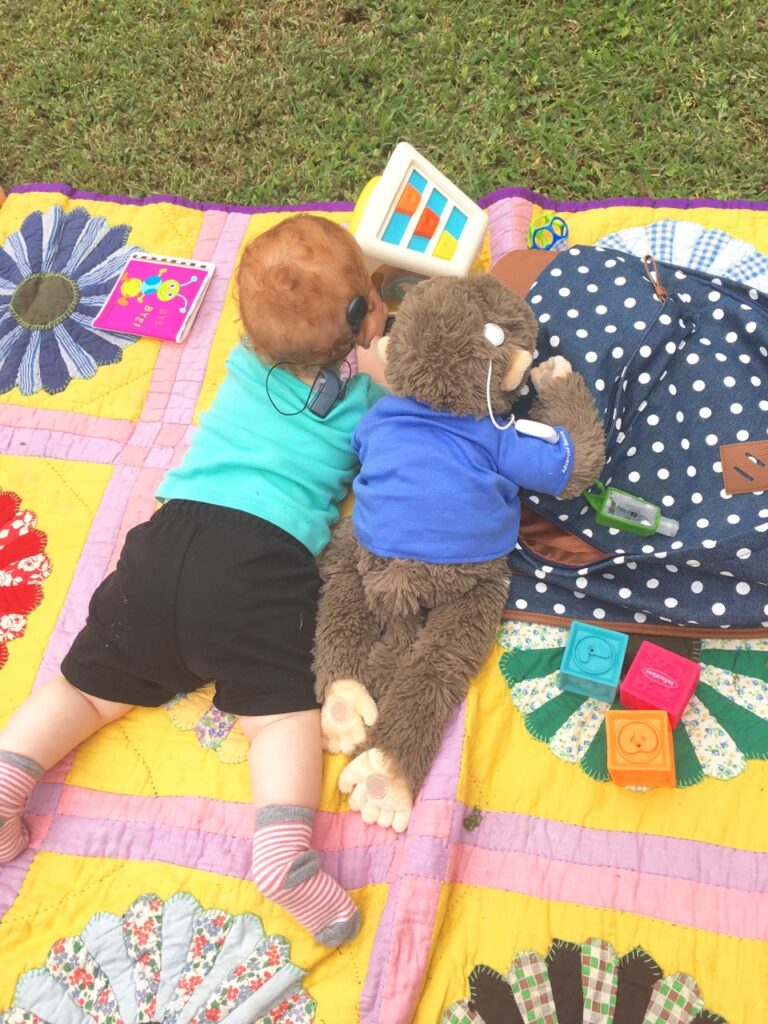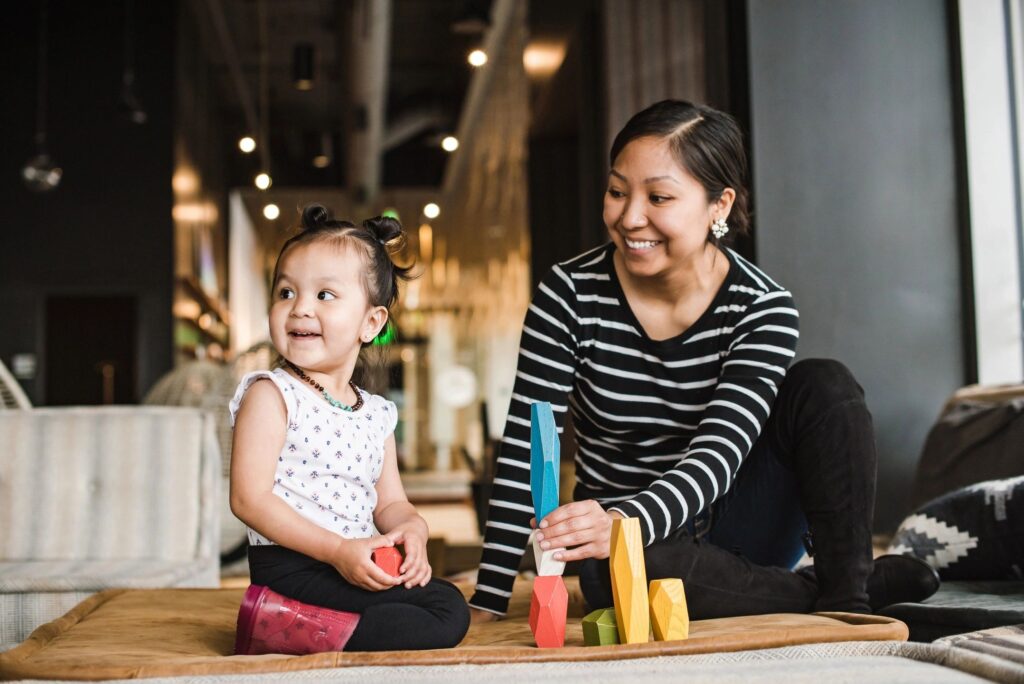Hover over the icons below to reveal an activity you can try today with your child who is deaf or hard of hearing. Try it again tomorrow, then add another! Repeat until these activities become habits in your daily routine.
USE SELF TALK
When you're making that first cup of coffee in the morning, talk/sign through each step! "Mommy can't wait for her coffee this morning! Mommy is opening the cabinet to get her favorite coffee mug. Mommy needs some water, turn it on! Do you hear/see that? Can you hear/see/feel the water?"
GET CLOSE
1. Can you reach your baby? 2. Can your baby see you? 3. Can your baby hear you? 4. If your baby has hearing technology, are they wearing it? If you answered 'yes' you're in the perfect position for your baby to hear/sign each and every loving word you say/sign.
LIGHT UP THE BRAIN
If you choose listening and spoken language as an outcome for your child, get into a hearing technology routine. Are baby's eyes open? If so, hearing technology is on.
I HEAR THAT
Share the meaning of sound. Get the water running in the tub. Bring baby to the doorway and cue him to listen, "Do you hear the water? It's time for a bath!" Then let baby see and feel the water running from the spout.
STAY ONE STEP AHEAD
Always communicate with baby 'One Step Ahead' (6 months to one year) of where your child is talking/signing. For example, if baby is using one to two word/sign phrases to communicate, be sure you are using three to four word simple sentences/sign phrases that include lots of descriptive words/signs.
SING FAMILIAR SONGS
Pull out your favorites and sing! "Twinkle, Twinkle", "Mary Had a Little Lamb" or "The Wheels on the Bus!" What else can you think of? And/or use YouTube to look for examples of signed (ASL) songs.
AIM HIGH
Set high expectations. A child with typical hearing learns one new word every 90 minutes! That's 10 new words a day! A child who is deaf/hard of hearing who has been provided full access to language from birth can too!
WAIT
Take baby out of his crib and lay him gently on the changing table to get him a fresh diaper. As you're changing him you ask, "How did you sleep little man?" You look at him, tilt your head and raise your eyebrows as you pause and wait. Then you respond for him, "You slept for 8 hours straight last night. I'd say you had a FANTASTIC night's sleep!" You could introduce the sign for "SLEEP ALL-NIGHT".
I SEE THAT
Face to face communication and eye contact with your baby is very important to ensure your baby is learning new language. Make sure to gain your baby's attention before you start signing. You can use a visual clue of waving your hand in baby's line of sight or tactile cue of touching your baby on the arm or leg.
READ
Read to your child at least 20 minutes each and every day! It doesn't have to be all at once, feel free to break it up throughout the day. If you are using more than one language with your child, make sure both languages are visible (for example: point to the picture of cow, sign COW, point to the word cow, fingerspell C-O-W).
TUNE IN
Baby brings you a truck. What do you do? --- Tune in to his interest and talk/sign/fingerspell about the truck! "Baby has a yellow dump truck! Look, the back moves up and down! Can you make the dump truck go? Look at the dump truck go!"
Starting a routine of these home habits will help your child’s journey to language and literacy.





